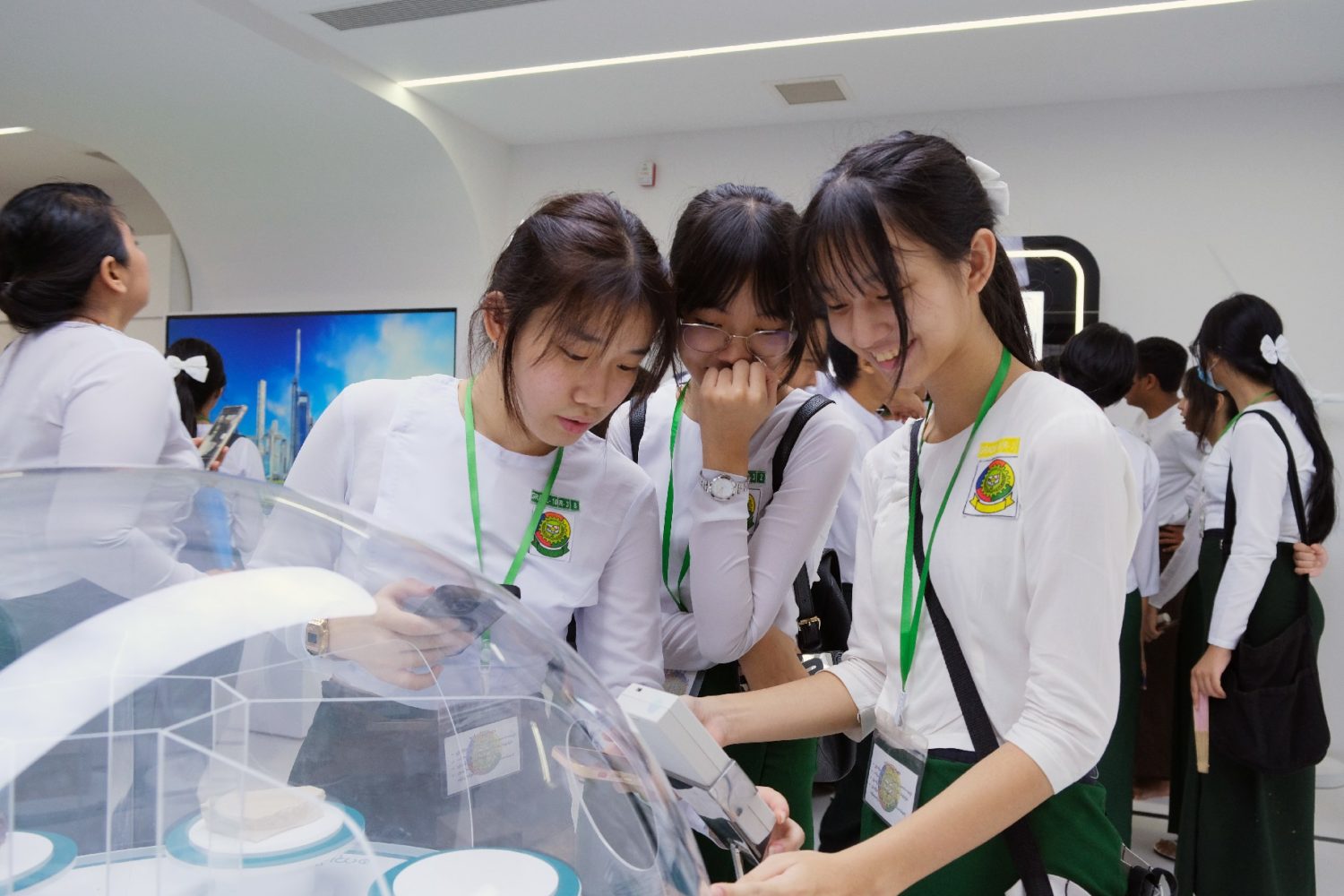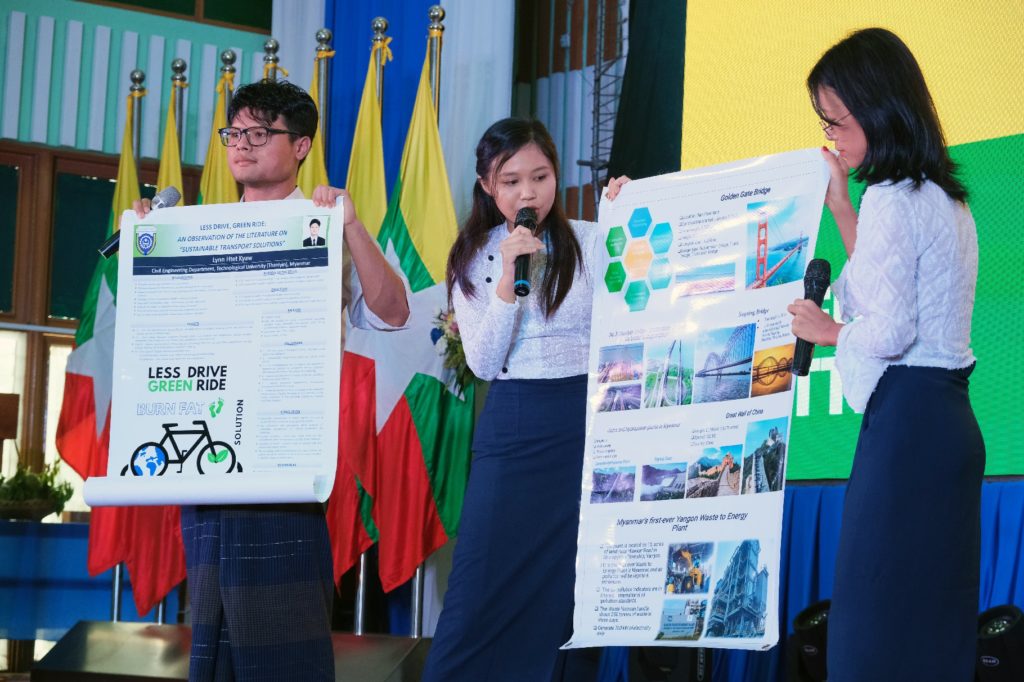
Through Festival to Atoms
back to contentsIn mid-August, Yangon, the capital of Myanmar, hosted the Science Festival, a joint event between Rosatom and the Myanmar Ministry of Science and Technology. For three days, Myanmar students and schoolchildren listened to lectures, took part in competitions and, most importantly, learned about Russian nuclear technologies, which are of growing interest to them.
This is the second time the Science Festival has been held in Myanmar, attracting increasingly more visitors. The festival was held at three venues: Information Center for Atomic Technology (ICAT), Yangon Technological University, and the Singapore-Myanmar Vocational Training Institute. Speaking at the opening ceremony, Dr. Myo Thein Kyaw, Union Minister of Science and Technology of the Republic of the Union of Myanmar, said that students’ interest in science and engineering professions was growing, which contributed to the development of human resources in the research-intensive and nuclear-related sectors.

Among the first events of the festival was a lecture titled ‘Nuclear Power Around the World: Myths and Facts’. First, professors from Russia’s National Nuclear Research University (MEPhI, Rosatom’s backbone university) demonstrated a video with the most popular questions and answers about nuclear technologies, such as the design of nuclear power plants, ionizing radiation in agriculture and medicine, and the role of nuclear in the development of science and technology. The audience could then ask the Russian lecturers their questions. According to one of the lecturers, Dmitry Samokhin, young people were interested in how safe present-day nuclear generation facilities are and what methods exist for handling waste generated during the operation of small modular reactors. It should be recalled that Russia and Myanmar are considering the possibility of building an SMR nuclear power plant in this Asian country as part of the intergovernmental agreement on cooperation in peaceful uses of nuclear energy signed by the two countries in February 2023.
This year’s HackAtom, a hackathon for student teams competing in nuclear technology, not IT, was also aimed at diving into the SMR theme. The idea of HackAtoms was proposed by MEPhI professors. Last year, the hackathon participants had to come up with the most effective ways of promoting nuclear technologies in Myanmar. This time, they started with listening to introductory lectures on nuclear power and SMR specifics (based, of course, on Russian examples), including economic, environmental and social aspects of the construction and operation of small-scale nuclear generation facilities, on the first day of the festival. On the next day, 12 teams from different universities had 24 hours to choose the best site for an SMR nuclear power plant in Myanmar (students know their country from inside) and explain their choice, said MEPhI Associate Professor Alexander Nakhabov, one of the HackAtom organizers. “Of course, this task will be solved by specialized, professional institutes and organizations, but we wanted to interest and fascinate the guys,” Alexander Nakhabov explains.
This approach worked. Many teams elaborated their proposals in depth, taking into account the future power needs in different regions, local seismic hazards, and access to water. “It is interesting that different teams proposed different sites,” Alexander Nakhabov noted. All the participants of HackAtom received certificates, and the winners were awarded prizes.
No less interesting was the festival for schoolchildren. During the festival, MEPhI lecturers told them about nuclear technologies. The children learned from a competitive game how to improve their scientific knowledge and what specialists will be needed for the nuclear industry in their country.
An interactive quiz was held for schoolchildren at the ICAT. Its participants learned about peaceful uses of nuclear technology, had their knowledge tested, made guesses about professions of the future, and even simulated a chain reaction with dominoes. At a workshop, the children made boats of a certain size from improvised materials. The boats had to carry a predetermined load and float in the aquarium. Another event was the Strength of Materials for Dummies paper show. “We showed, for example, how to turn an A4 paper sheet into a gate through which a person will pass. Then the kids used paper sheets and paper tape to build a chair with a backrest that could support the weight of a person. Most of the products broke under the weight of a man, but one survived, and the team of its makers received the main prize,” said Larisa Matveeva, the head of the Information Center for Atomic Energy of Chelyabinsk and an organizer of competitions in Myanmar.
The ICAT also hosted a public discussion with Myanmar university professors and a panel discussion on nuclear technology. “Myanmar needs nuclear technology for its development. And we need young people, the main driving force of the country, to step in and take full advantage of this technology. It is important to foster young talents so that they can participate widely in the use of nuclear technology,” said Deputy Minister of Science and Technology Aung Zeya.
The festival also featured a talk show with women who have dedicated their lives to science and research. Prof. Yi Mon Nai from the Yangon Technological University and Daw Nae Zi Tyry Naw from the Mandalay Technological University spoke to students and schoolchildren about their work and career paths.
“The main idea behind the Science Festival is to demonstrate the capabilities of nuclear technology in an easy-to-grasp and interesting form, bring young activists together, and give them a chance to immerse themselves into the fascinating world of innovations and scientific discoveries in an informal and friendly atmosphere. I am sure that there are children among the festival participants who will want to become engineers and designers and who will implement nuclear projects, promote energy solutions, create new materials, and participate in the development of nuclear medicine,” said Andrey Timonov, Acting Director for Communications at Rosatom.
Practice proves this approach to be effective. As Alexander Nakhabov noted, the students who participated in last year’s HackAtom and won it have applied to study in Russia this year.
A joint program has been adopted to train personnel for Myanmar’s nuclear industry: students first study for a bachelor’s degree in Myanmar universities and then seek a master’s degree in Russia. The educational program also provides that Russian professors will semi-annually hold intensive training courses (lectures and exams) at Myanmar universities on core nuclear disciplines, focusing on Rosatom’s technology and solutions.




